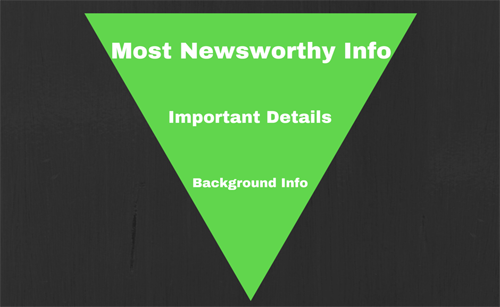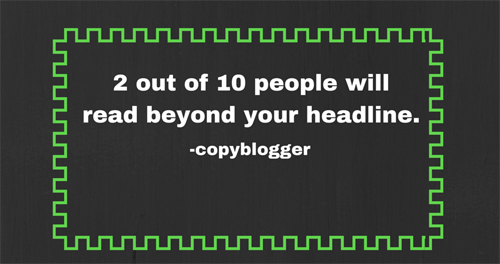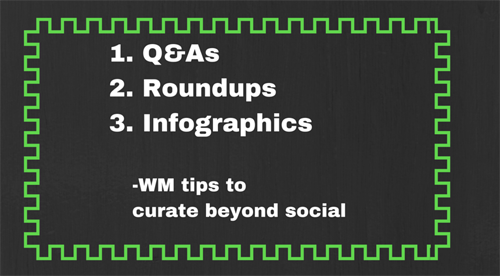Content Development Checklist for 2016

The demand for unique, relevant content from both consumers and the channels they find themselves on (e.g. search, social) is high, but creating, curating and circulating content can be a huge undertaking for brands of all sizes.
Not only do companies need in-house writers (depending on an organization they can fall under the titles of content marketers, marketing communications, editors, bloggers, etc.) and possibly outsourced ones as well, but now someone within a company is tasked with being a publisher of sorts. One of the most effective ways companies undertake a content initiative is to actually conduct themselves as their traditional publisher counterparts do, with a clear editorial department and guidelines they must follow and lines they shouldn't cross.
Here's why: Content marketing is, of course, used to subtly persuade readers in some way (at first it could be to understand the importance of a topic, then become an advocate for it and ultimately buy what the content developer is selling), but end-users on both the consumer and business side are smart. They may read one piece of uninteresting or promotional content, but they won't come back for more and that is to the detriment of website traffic, time on site, pages viewed and other metrics that Google considers when ranking a site.
The domino effect of low-quality, irrelevant, uninspired or salesy content continues with less social media engagement - fans won't like (literally), share or click through social posts that lead to articles, infographics, videos or podcasts that don't offer them true value. To help guide brands through the content maze, Website Magazine compiled a checklist for creating, curating and circulating content for enterprises:
Creating
Marketers overwhelmingly believe original written content to be the most effective form of content, but before getting started, answer these questions:
-Is the most important information up top? It's important to remember that today's Web users are more like "skimmers" than "readers." By following the traditional inverted pyramid approach, brands can ensure their initial point is received before the person glances over the rest of the article.

-Does it have a compelling title? Crafting titles can be an art, but with so many sophisticated content management systems (CMS) available, brands will want to leverage any A/B testing that their CMS may offer. By doing so, a company can take away the marketer's biases toward a title and test two different options, with the winning title being sent to the audience.
- Is it relevant? A company should know its audience and the topics they want to read about. Google trends and Google Keyword Planner are two good places to start, as is BuzzSumo. The latter can provide marketers with what is already popular among similar audiences. Enterprises can also look to their own frequently asked questions or site search to see what their website visitors are often inquiring about. For example, if "How Do I..." questions keep appearing in customer service tickets or in site search queries, that's a series of content that is relevant to an audience and visitors can keep coming back to.
- Is it evergreen? While jumping in on trending topics is certainly a good strategy because timely topics like sporting events, awards show or movie releases let brands capture some of the buzz that has been created outside their four walls (e.g. "Star Wars and Its Digital Force"), it's better for companies with limited content resources to develop more timeless or "evergreen" content - meaning it doesn't lose its appeal whether it's read today or in a year (or even longer) from now. Evergreen content not only has more flexibility as to when it's scheduled to run, but it also can be re-shared and repurposed throughout the year.
- Is it scannable? Today's readers (uh hem, skimmers) need bulleted lists, subtitles, images with captions, call outs and other scannable items to briefly glance through the page and get the main idea. It's sad, but true that most people just read the headlines, so marketers should appeal to this scanner audience by giving them the highlights.

- Does it include names and faces? While this won't work for every piece of content, including names (either other brands' names or quotes from customers or industry insiders) can help boost a piece of content's likeliness to be shared as can faces (e.g. headshots of sources or recognizable figures) because people not only like to compare themselves and their beliefs with others, but the people recognized in the content will read and share as well.
- Was it proofread? While self-explanatory, typos and other mistakes happen. Everyone works in busy environments where they're tasked with many projects. Regardless, someone else has to read the content before hitting send, publish, schedule, etc. If this isn't an option, a marketer should sit on the content for at least a few hours to give their eyes a refresh, allowing them to pick up on mistakes.
- Is there supplementary info? Chances are that one piece of content doesn't live in isolation; there are other similar pieces that should be linked to.
- Did you hit your word count? Since most brands publish their content solely online, the chance that they have set word counts is very slim, so word count is more arbitrary today than if writing for print with pre-defined constraints. That said, a word count can be used to ensure writing is tight and fluff free. Further, a word count can cause the author to think about how all of their strongest points will be made in that set space or at least be used to organize thoughts and information.
- Is author info present? While brands may want to stamp all their content as their own, and not a particular writer, people want to know more about the person writing the content so they can judge for themselves whether the info is authentic and credible based on the author's experience and role with the company.
- Are there images? Tools like Canva and Pagemodo make such quick work of creating beautiful graphics to accompany articles that no piece of content should be absent of pictures. Images grab readers' attention and, of course, can say more than words can (especially if they aren't read). What's more, having images in posts makes it easier for a socially savvy audience to create and share a compelling social post because of course posts with images receive higher levels of engagement.
- Is it original? With so many companies creating content, enterprises will find themselves writing about similar topics as their competitors. While this is OK from time to time, it's important to be aware of this as there will always be someone who took the same topic and did a better job executing the content for it. Brands will want to consider improving their editorial calendar if they're simply pushing out the same material as everyone else. They should also consider content curation.
Curating
Creating high-quality content is time consuming and knowing how to hire creative types can be difficult, so many companies turn to content curation, "the process of gathering information relevant to a particular topic or area of interest."
While primarily used by brands in the way of "collecting" articles from across the Web and sharing them with their own audiences, there are some good opportunities to curate content for more than social, including:

Q&As: A great way to get more names and faces in a brand's publication, question-and-answer posts can be quite insightful for readers if the right questions are asked (those relevant to the respondent and the audience) and the right person is tasked to answer them (Q&A subjects must be experts in that field). While the following questions should be customized, think along the lines of:
- Why is this important?
- Why should ___ care?
- How did this start?
- What challenges does __ overcome?
- How will this change ___?
Roundups: Another fantastic idea if getting names, faces and valuable insights is the aim, round-up style articles typically have one question asked of many people with similar titles or backgrounds. Make sure to get the following:
- Headshots
- Correct spellings of names
- Job titles
- Twitter handles (to include or tweet to later)
- A quick bio as to why they are qualified to answer the question
Infographics: A hyper-engaging form of content, infographics appeal to our "scanner" friends because they can glance through the visual representation of data at ease. Marketers collect data from varying sources (or use their own) and add a compelling title and other copy to make infographics. Here are questions to ask:
- How recent is the data?
- Were all the sources credited?
- Is the text large enough to read?
- Does it prove our point?
- Is a call to action included before the infographic so readers can get more info if they want to (e.g. download whitepaper)?
- Did we provide sharing options?
Circulating
There's no point in creating awesome, shareable content without actually circulating it to the masses (or at least those who will find it relevant, interesting and worth their time). Social media networks are the primary way to distribute content for marketers (search engine marketing is if talking about paid advertising tactics), but there are some items to check off before a post, tweet or update going live, including:
- Does the link work?
- Is the link shortened?
- Does the post include a picture?
- Is the post scheduled at the optimal time? (Look to Facebook Insights, Buffer optimal timing tool and/or industry benchmarks)
- Is the post formatted for that specific network?
- Should audience targeting be used?
- Is it appropriate for the network?
Creating, curating and circulating content is a tough job. It requires both creative and analytical thinking, but with so many tools, experts and best practices at their disposal, brands will be sure to take their content initiatives to the next level in 2016 and beyond.











